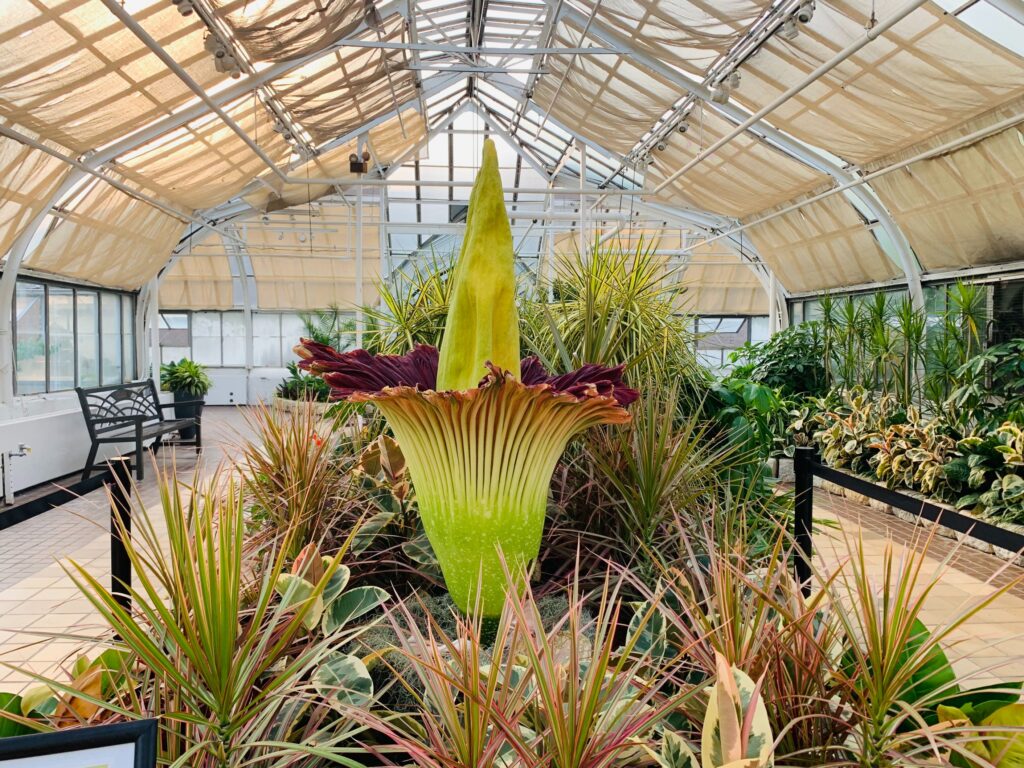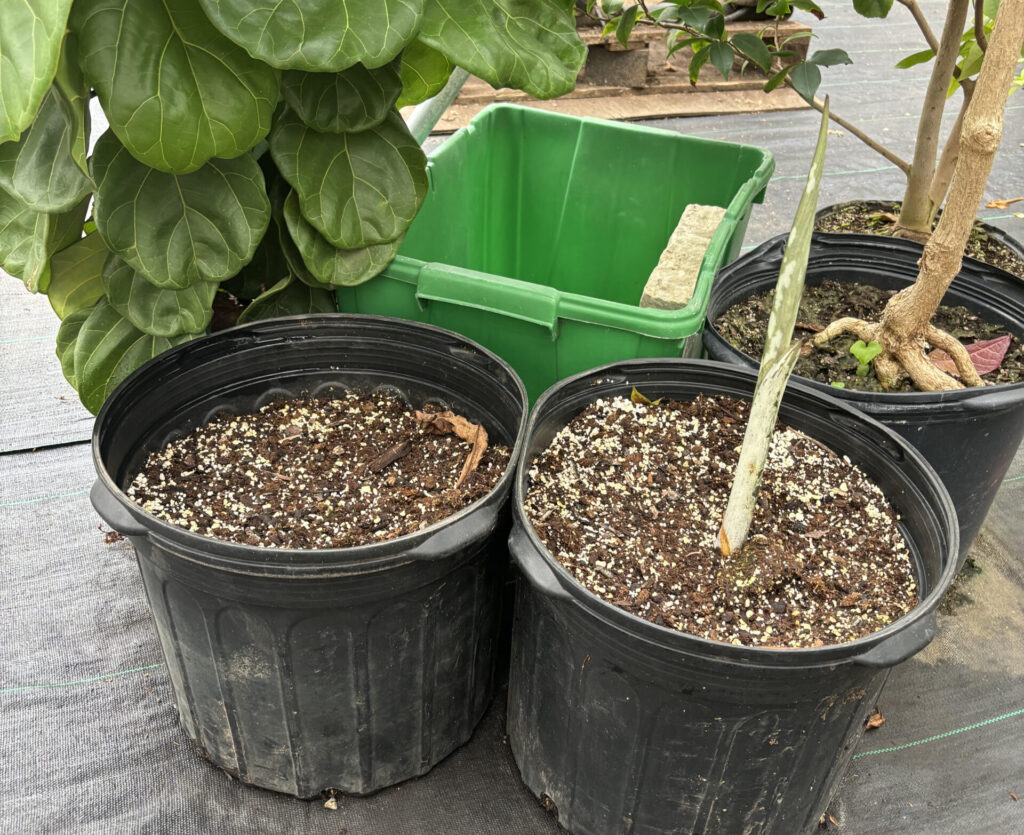Published November 15, 2023
Did you smell that? The blooming of the Corpse Flower this summer was a smelly and exciting event for the Conservatory and the Columbus community. Discover the origin stories of the Conservatory’s FOUR corpse flowers and the rare events surrounding this year’s blooming! Community learning opportunities such as these would not be possible without people like you, our generous supporters. Read on to learn more!
If you visited the Conservatory during July, you may have noticed a rather stinky smell cascading in the Dorothy M. Davis Showhouse. This year, Franklin Park Conservatory and the Columbus community got to witness an exciting and rare occurrence: the blooming of the Corpse Flower, one of the most significant flowering structures in the world.
This fascinating flower is native to Indonesian rainforests and blooms every 7-10 years, with the bloom lasting only 1-2 days. When in full bloom, the flower will release a stinky odor, similar to rotting flesh, which attracts its pollinators of flies and beetles.
The Conservatory currently owns four corpse flowers, scientifically known as Amorphophallus titanium. Two of the flowers have lovingly been given names: Bob and Betty (Betty bloomed this year).

Betty
“Two [of the four] were actually propagated from Bob, we did leaf cuttings 5 or 6 years ago and the leaf cuttings took root and created bulbs,” Brian Kocher, Greenhouse Manager, excitedly shared.
There are different varieties of Corpse Flowers, but the rare and desirable ones are the titaniums as these are the varieties that grow to be incredibly big. All four of the Conservatory’s Corpse Flowers are titaniums.
While the Corpse Flower was in bloom this past summer, individuals, families, and organizations within the Columbus community came together to observe and smell this flower – allowing strangers to bond over unique shared experiences. Attendance at the Conservatory increased by 56% during the week the flower was on display and blooming!
Franklin Park Conservatory used the blooming as a way to educate the community about the Corpse Flower, its life cycle and how the flowers are pollinated.
“People are fascinated with Corpse Flowers and their blooming, you know it smells bad, it smells like rotting flesh, we get to teach that whole thing about why it smells bad,” Kocher said.

The blooming of Corpse Flower Betty had a local and national reach. Our friends at the San Diego Botanical Garden heard about Betty blooming this year and gave Franklin Park Conservatory the opportunity to pollinate Betty by overnighting pollen from one of their Corpse Flowers that had bloomed just a few weeks prior.
Pollinating Corpse Flowers in captivity is difficult as there is a “small window of when they are susceptible or when they’re ready to be pollinated,” Kocher shared. Horticulture experts at Franklin Park Conservatory tried a few different methods. “We cut two little squares in it so we could have access to it to try and get that pollen in there. We had two different types of pollen, one that had been frozen and one that hadn’t and both are from San Diego. We mixed it [the pollen] with cornstarch, and then put it on like a little paint brush and then flicked the brush to get the pollen in there, then we just kind of blew on it and it all went all over. They’re pollinated by bugs so we were doing our best to mimic that,” Kocher explained.
Unfortunately, Betty was unsuccessful in pollinating, but hopefully there will be another opportunity to try again when she blooms in 7-10 years.

Bob and Betty
When individuals leave the Conservatory after witnessing rarities such as the blooming of Betty, Franklin Park Conservatory and Kocher hope they leave with a “whole new appreciation or a continued appreciation of the natural world, the plant world, and how cool plants can be. Because they really and truly are so cool! They have a will to live, they adapt, they find a way. Nature finds a way. It’s amazing.”
Rare experiences like these are made possible for our community thanks to generous support of donors like you!